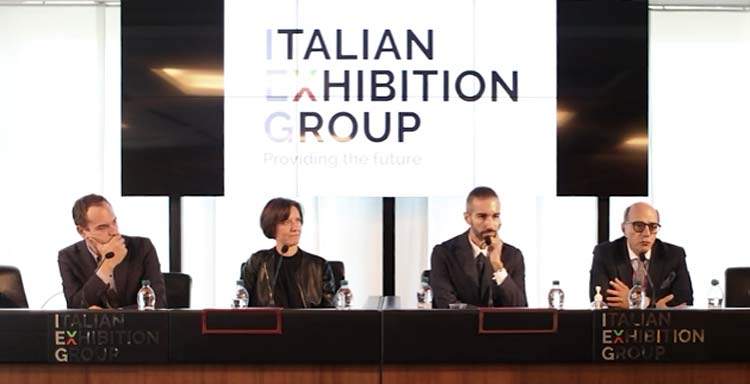On the occasion of the conference Cultural Tourism. Projects and Proposals 2023 that Finestre Sull’Arte organized on Oct. 13 as part of the TTG Travel Experience fair in Rimini, some of Europe’s leading tourism promotion bodies were invited to reveal a preview of what their proposals related to cultural tourism will be for the coming year. The event was attended by Francesco Tapinassi (director of Toscana Promozione), Giovanna Sainaghi (Italy director for Visit Flanders) and Pierangelo Romersi (director of Destinazione Turistica Emilia); moderator was Federico Giannini, director of Finestre Sull’Arte.
In particular, an important common point emerged that all participants agreed on, namely the fact that those who practice cultural tourism are conscious travelers who do not just go to a place and visit a list of monuments and museums in brochure mode, but are travelers who are looking for more experiences to be had in that particular area.
This was well pointed out by the director of Toscana Promozione Francesco Tapinassi, according to whom there is no longer, precisely, the so-called monothematic traveler: in its place has been replaced by the traveler who wants to have as many experiences as possible in order to get to know all aspects (or almost all aspects) of the place he visits. For this reason, in line with this change of course, strong collaboration between the public and private sectors is more necessary than ever. Toscana Promozione’s challenges for 2023 will in fact be essentially oriented on two fronts:Unesco and the Etruscans. The former intends to unite culture and environment, given that Tuscany has as many as three parks and two geoparks, and intends to tell the story of the region’s entire Unesco heritage with special events that also involve food and wine. The Etruscan Challenge, on the other hand, wants to make known through targeted campaigns and with modern keys this people who distinguished themselves for their strong narrative ability and for themes that are very current today, such as the role of women, which was very modern for the time. The goal is to raise awareness of the Etruscan present and how our ancestors were in a sense the initiators, the forerunners of the idea of well-being that we hold so dear today. Fundamental on both fronts, however, is the involvement of the business system-the real challenge for 2023. Another theme addressed is decentralization, which aims, for example, to raise awareness of the Medici villas around Florence, bringing tourists out of the city but to interesting and quality destinations.
Italy director for Visit Flanders Giovanna Sainaghi also agrees that today’s traveler is more aware and looking for an authentic experience. Flanders will focus in 2023 on Antwerp, a multifaceted city where different souls coexist: the classic Flemish and the more nonconformist. Aspects on the basis of which Antwerp’s Royal Museum of Fine Arts has been refurbished and renovated: the Koninklijk Museum voor Schone Kunsten Antwerpen (KMSKA), which recently reopened its doors to the public after ten years of closure to present itself in a new guise, with an unclassical visitor percorsp. Here classical Flemish art coexists with contemporary art. If in past years the focus was on highlighting artists such as Jan van Eyck or Antoon van Dyck, now the focus is on mid-nineteenth-century artists such as James Ensor for more nonconformist approaches.
But Antwerp is also the city of Pieter Paul Rubens, so the focus will be on highlighting places for which the works were conceived and created, such as the Ghent Altarpiece inside St. Bavon Cathedral. An opportunity for an authentic experience that unites artist and context. As part of this modernization, the Rubens House is scheduled to close for works in 2023.
Flanders will then aim to open up to smaller localities, enhance abbeys, and share experiences with local people to enter the local ecosystem. However, the approach for 2023 will always be guided by art, which is the primary reason for travel to Flanders for Italy.
Emilia also aims to bring the area that includes the provinces of Parma, Piacenza and Reggio Emilia to life with a mix of all-around experiences. In fact, Pierangelo Romersi, director of Destinazione Turistica Emilia, speaks of a "slow mix," or a combination of cultural, food and wine and outdoor experiences between villages linked to quality of life. It is no coincidence that Emilia is considered the Italian Food Valley, where food and culture coexist. Recently several events have attracted so much tourism: in Piacenza with the exhibition at the Ricci Oddi Gallery dedicated to Klimt around the Portrait of a Lady, which returned to the museum after more than 20 years following its theft and unusual discovery; in Parma and Busseto with the Verdi Festival; in Reggio Emilia with Fotografia Europea.
In 2023 the focus will be on storytelling itineraries related to history: for example, the interior of the Gothic palace in Piazza Cavalli in Piacenza can be visited. From November 2022 to March 2023, a major exhibition on restless art is scheduled at Reggio Emilia’s Palazzo Magnani, with artists from Paul Klee to Ligabue, Asger Jorn to Anselm Kiefer, Alberto Giacometti to Emilio Isgrò. In Parma, on the other hand, the focus will be on film tourism with Guareschi and Bertolucci.
Intact medieval villages such as Bobbio, Castell’Arquato, Torrechiara, Colorno, Guastalla and Canossa will also be enhanced. Goals 2023: turn visitation into experience, make people return to the area again and again, and twinning for networking cultural offerings.
Below are the full videos of the speeches.
 |
| The cultural tourist? He is a traveler who seeks unique experiences. The TTG conference |
Warning: the translation into English of the original Italian article was created using automatic tools. We undertake to review all articles, but we do not guarantee the total absence of inaccuracies in the translation due to the program. You can find the original by clicking on the ITA button. If you find any mistake,please contact us.